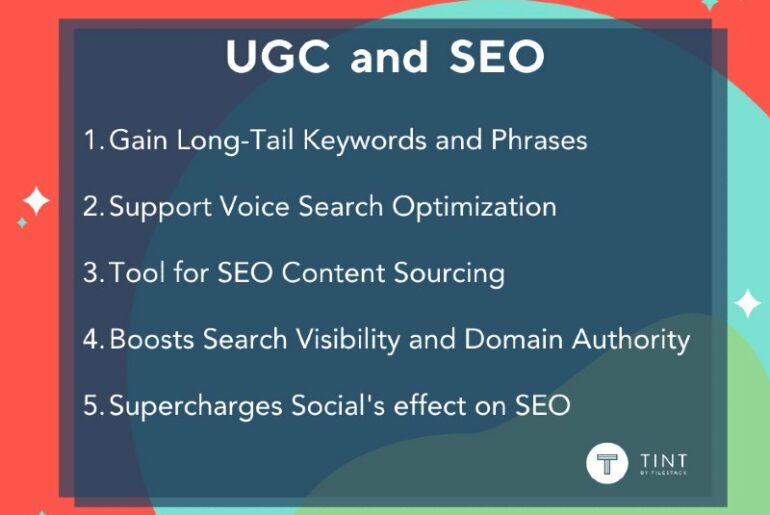Ashley GWilliam is the Content Strategist and Writer at Articulately.
How frequently should I publish content?
It’s a common question. And the answer is, usually, annoyingly vague: It depends. It depends on your marketing goals, your manpower, and your bank account.
Unfortunately, most of us don’t have HubSpot-level budgets. The company’s marketing blog dominates dozens of organic search terms by cranking out 20 to 25 posts per week.
As a lead writer for an inbound agency, I wrote a minimum of 16 comprehensive articles per month for clients. The articles were well-researched, relatively entertaining and averaged 1,200 words per post. Significant spikes in traffic came after consistently publishing content for 8 to 12 months.
Both quantity AND quality mattered when it came to ranking our clients for competitive keywords. If you’ve never reaped the rewards of a well-executed SEO strategy, that may sound like too much work. Understandably, this is why many SMBs turn to paid advertisements.
Unlike inbound marketing, social media and PPC ads deliver instant traffic. The only problem? The leads stop coming when you stop paying. Though I felt good about achieving cumulative results for our clients — traffic that would keep coming long after they stopped paying us — I often found myself wondering:
Are expensive paid advertising campaigns and labor-intensive SEO really the only options for increasing site traffic, high-quality leads and brand awareness?
Around this time, I began working with early-stage startups who seemed to be in a catch-22: They didn’t have the budget for huge ad spend, nor did they have the time to write 4-6 posts per week.
This conundrum led to my discovering a handful of online marketers who appeared to be working smarter, not harder. Case in point: Brian Dean of Backlinko published less than one post per month from 2012 to 2017, for a total of 53 articles. As reported by BuzzSumo, the posts drove nearly 4 million visitors to his site and generated an impressive 2,490 shares per article on average.
In this article, I’ll share some tips I’ve picked up from marketers like Brian that I’ve begun experimenting with.

How to Generate Better ROI: Publish Less Content
Unsurprisingly, the “secret” to gaining better ROI with less content isn’t so secret…
It’s producing original, in-depth, and well-researched content, before strategically promoting it. Instead of spending 1 to 2 hours to create a 500-word post like the average marketer, you might spend 12 to 20 hours crafting a truly original, 1500-to-3500-word post.
Translation: Marketers must get buy-in from key stakeholders to put more money into more thoughtful content upfront and then organically promote that content like gangbusters. You should publish less content and syndicate more (and more effectively).
“You don’t have to create content, day in, and day out,” says Derek Halpern, Social Triggers founder. “You just have to work on getting the content you already have… in the hands of more people.”
As Halpern shrewdly points out, spending 80 percent of your time creating content and 20 percent of your time promoting it makes zero sense for small marketing teams. Informal studies reveal that only 10 percent of the content you make will “rise to the top,” anyways.
For example, large publishing platforms like Forbes rely on contributor networks to publish thousands of articles per day. Why? Because they know a small fraction of those average 500-word articles will generate buzz.
This means scrappy content marketers should devote more time to promoting content than they do creating it. In other words, you have to hustle to get your content seen before the SEO begins kicking in. So, why not create something that your target audience would find truly useful, remarkable and worthy of sharing?
Here are three tips for putting the “less is more” approach into practice:
1. Publish epic “case studies” on Medium
A few years ago, my colleague Ali Mese found himself weary from the pressure of cranking out content to grow his personal brand. So, he vowed to only “hit publish” when had something truly original to say:
“The more I focused on helping my startup clients to grow, the more firsthand lessons I learned,” Mese says. “And every time I learned something through that experience, I logged onto Medium and published a new story… In the most cluttered marketplace in history, readers’ attention is fleeting and it is our job as writers to constantly earn the attention and trust of our audience.”
Mese has since grown his readership like bananas on a Costa Rican farm in the summer by publishing one high-quality article every 2 months on the platform.
Mese replicates these results for his own clients, thus raising brand awareness and quality leads, by taking a three-fold approach:
- He emphasizes real numbers while utilizing superb storytelling.
- He pitches publications that already have large readerships.
- He invests in promoting Medium articles on Twitter.
Medium’s algorithm, theoretically, promotes the pieces with the most “claps” to the community’s recommended page. However, gaining initial traction can be challenging.
For this reason, savvy marketers invest in small paid advertising campaigns that drive traffic to their Medium articles. Assuming you are targeting the right audience, and your posts are super interesting, your early promotional efforts will have a cumulative effect on future publishing success.
Upon correct execution, this strategy results in getting noticed by Medium staff, appearing on featured tag pages and being promoted in the platform’s email newsletters. Though some marketers prefer to reserve their non-SEO-worthy ideas for Medium articles, others are comfortable cross-publishing on both blog and platform.
After uploading a post on WordPress, and ensuring the content is indexed by search engines, you can use Medium’s WP plugin to ensure your Medium story has a ‘canonical tag’ that links to your WP version. This supposedly prevents Google from “punishing” your site for duplicate content.
2. Become a master content distributor
Another way to achieve better ROI with less content? Become a master content distributor that does more than post on existing social networks and call it a day.
That’s how AppSumo’s Chris Von Wilpert came to fame. The online marketer says he generated $100,000 from one blog post by writing a strategic post and promoting it via what he dubs “The Content Promotion Flywheel.” In only 2 months, Von Wilpert attracted more than 87,000 visitors with less than $500 ad spend.
The content marketer breaks his process into four steps:
- Create keystone content.
- Build an audience of “true fans.”
- Use free traffic multipliers: Influencer outreach, content repurposing, email list building tactics, etc.
- Use paid traffic multipliers: Retargeting ads, social media ads, etc.
Study companies and personalities whose no. 1 channel is content marketing (i.e. Drift, Buffer, Seth Godin), and you will notice a familiar pattern: They all have unusually engaged audiences that genuinely enjoy interacting with them and one another.
The million-dollar question is obviously: How do you build a fan-base from scratch? Loyal brand communities are built on trust, and that doesn’t happen overnight.
Von Wilpert accelerated the trust-building process by making a list of his “Dream 100” clients, writing a juicy piece of content he knew they would love and personally sending each contact a link via email. He spent hours studying, synthesizing and translating how other SaaS companies could replicate HubSpot’s growth strategy before publishing the post: Peek Inside HubSpot’s Multi-Million-Dollar SaaS Growth Strategy.
The result? Many SaaS influencers with large audiences happily shared his “look under the hood post” with their followers via social media, including the CMO of HubSpot himself.
Von Wilpert says any industry could replicate the same strategy with success, only the numbers might be smaller in some cases. Obviously, the entire framework hinges upon creating the right keystone content. Which brings us to point no.3:
3. Write “epic” content
This particular type of content goes by many names: Evergreen content, keystone content and epic content are common. I just call it “content that, actually, gets read.”
Why? Because your target audience is genuinely interested in the subject matter at hand, and every sentence you write is enticing them to read further down the page.
“If you want a ton of traffic – you have to make your content ‘contagious,’” says BloggerJet founder and Ahrefs CMO Tim Suolo. “By saying ‘contagious,’ I mean the kind of article that makes the reader want to share it with someone else. [This] will naturally amplify any initial traffic that you bring to it.”
Essentially, there are two parts to creating epic content:
- Being a good copywriter
- Choosing the right subject matter
The former requires clear, crisp and concise communication. It also necessitates a knack for teaching via storytelling. Despite what many may believe, writing is a skill that can be developed with practice.
Personally speaking, the more challenging aspect of the equation is identifying the perfect subject matter to write about. This is where good ole’ fashioned research comes in.
Assuming you have already identified your dream clients, your objective is to pay attention to the kind of content they read, like and share:
- What problems are they most interested in solving?
- Who do they most admire in the industry?
- What are they most curious about?
However, one of the easiest ways to assure your content idea has viral potential is to check a content database like Buzzsumo.
Search for keywords related to your topic and identify what sort of headlines get shared a lot. Once you’ve proven your idea is traffic-worthy, it’s just a matter of improving upon those already-viral articles with your own unique data, stories and viewpoints.
Additional tips for creating epic content:
- Use photos, screenshots, and graphs.
- Use plenty of subheads.
- Hard return every 2 to 3 sentences.
- Include social sharing options.
- Write riveting introductions.
- Write curiosity-invoking headlines.
- Backup claims with linkable research when possible.
Obviously, this is a simplified summary of how to create shareable content, but you get the drift. Study popular articles already created by leaders within your industry to see how yours stacks up.
Work smarter, not harder
Finally, don’t forget to repurpose the epic content you put so much effort into creating, distributing and advertising. Long blog articles can be broken into slideshares, social media posts, podcast discussions and more.
Case in point: Buffer committed to only repurposing and refreshing existing content as an experiment in 2015. The results? Organic search traffic grew more than 4 percent and one Medium post generated 2,888 views. While we can’t all get away with publishing no new content for an entire year, most of us could stand to publish far less often. Remember: Publish less content, promote better!
TINT helps you create better, more engaging marketing materials by incorporating user generated content into each piece of collateral. UGC converts betters, creates stronger audiences, and democratizes the content creation process. Schedule time with one of our UGC experts today to learn how TINT can help support your content marketing goals.




